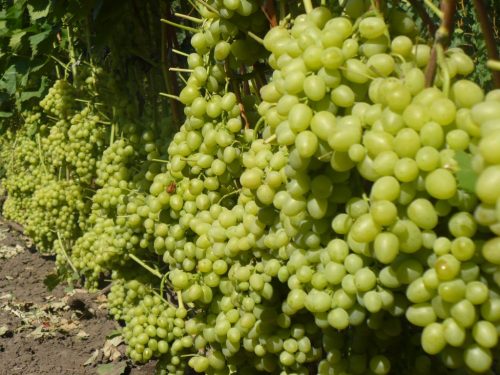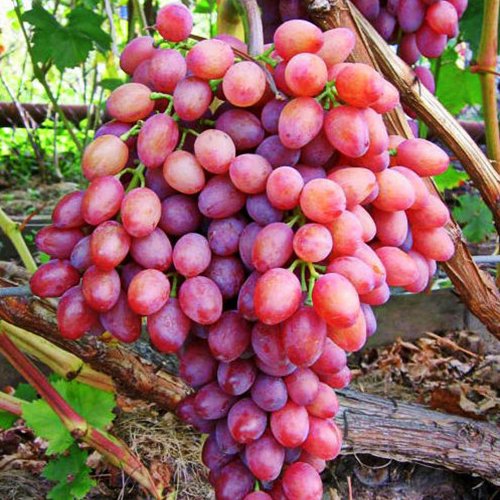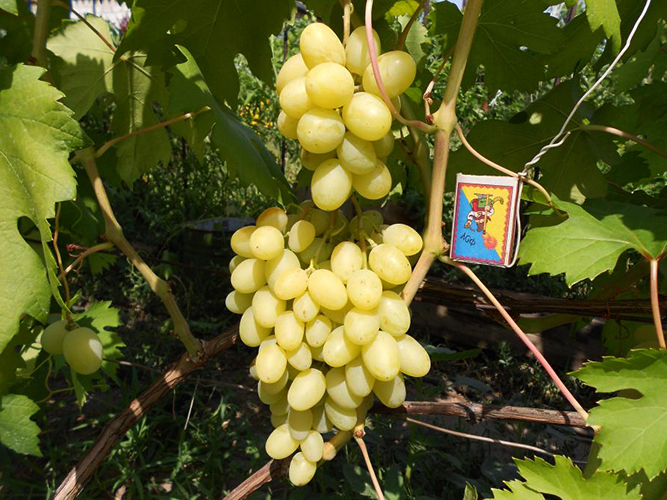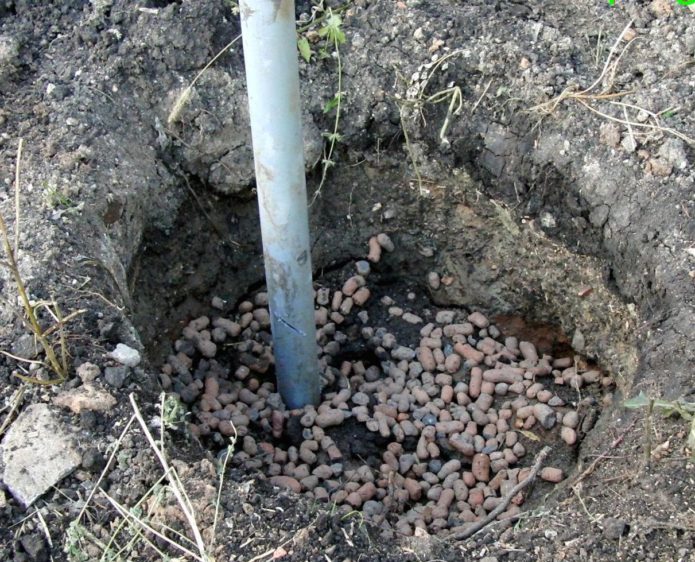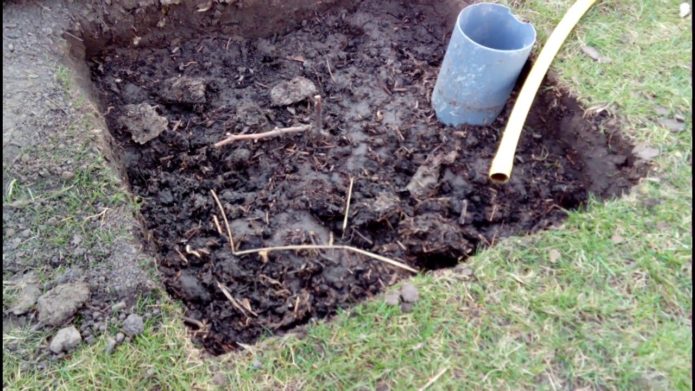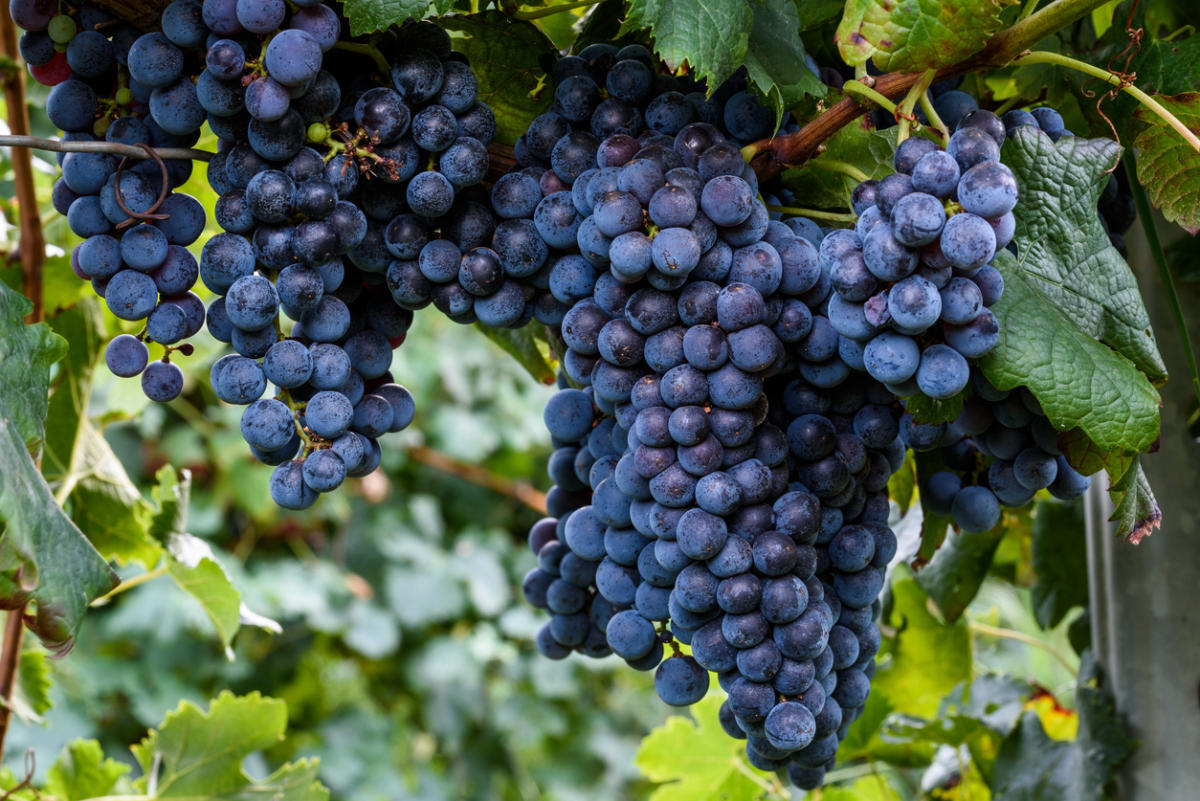The word "lily of the valley" is associated with spring warmth, beauty, wonderful aroma. This name is not only the flower, but also the grape variety for which it suits perfectly. You can make sure of this by reading its characteristics.
Content
The history of the creation of the Lily of the Valley grape variety
The hybrid form of Lily of the Valley was created by Vitaly Zagorulko, an amateur of grape selection from Zaporozhye. He has been growing solar vines on his site since the 80s of the last century. In the 90s, he began to engage in the selection of new varieties, striving to obtain self-pollinated grapes that give a stable harvest and promote ovaries on other vines, which have a short ripening period, tasty and beautiful.
One of the varieties bred by Vitaly Vladimirovich relatively recently is Landysh. Winegrowers learned about this form in 2012, but the vine still had a testing period to verify the declared characteristics. After their confirmation, Lily of the Valley quickly became one of the popular grapes in Moldova, Ukraine and southern Russia, where it can be grown without shelter for the winter. It is also cultivated in the Moscow region, but here it must be protected from the cold.
As the parental forms of Lily of the Valley, Zagorulko, as in many other cases, used such well-known varieties as the Talisman, which has high resistance and large berries, and has an excellent taste and beautiful color Radiant raisins with highly developed male flowers, which is extremely important for good pollination. Despite the repeated use of this original pair, this time genetics presented the breeder with a pleasant surprise in the form of grapes, later named Lily of the Valley.
Description and characteristics of the variety
To admire the fruits of the Lily of the valley grapes, after the spring opening of the buds, you need to wait 125-135 days before the harvest ripens.
The bushes are very strong. Shoots can be 3.5–4 m long, but they ripen well. On each of them 1-2 inflorescences with bisexual flowers are formed in spring, which guarantees their excellent pollination.
The bunches grow large - weighing about 1 kg or more. Berries in clusters do not crowd each other, therefore they are not deformed and, when mature, have an oval shape. In size, the fruits differ slightly from each other and weigh approximately 11 g.
Ripe berries turn yellow with a slight admixture of lemon. Their fleshy, juiced flesh is covered with a skin, which is almost invisible when used for eating grapes. Lily of the valley berries gain 17–19% sugar and 5–7 g / l of acid by the time they ripen. But their main advantage is their peculiar taste. Gourmets will feel in it not only nutmeg, but also the aroma of lily of the valley or white acacia flowers. Some people call this smell perfumery.The tasters noted that Lily of the Valley retains its special taste regardless of the locality in which it was grown, and rated it at 4.7-5 points.
The berries are stored well without losing their amazing aroma. They can stay in the cool of the store until the spring of next year.
Winter frosts down to -21ºС Lily of the valley are not afraid, and in areas where the cold is stronger, it can be grown with a winter shelter.
It is still difficult to talk about the yield of the variety, since it appeared not so long ago, there are still no mature perennial vines and accumulated statistics on them. However, the number of inflorescences formed on the shoots and the size of the ripening bunches indicate the high potential of Lily of the Valley.
The immunity of this hybrid form to the diseases characteristic of grapes can be called average.
Video: Lily of the Valley grapes
Features of growing grapes Lily of the valley
Lily of the valley grapes can be propagated by seedlings, cuttings, layering, or grown from seeds. The last path takes the longest time before the first harvest. As experienced growers testify, the best option is to plant a seedling or layering. In this case, the first harvest can be expected in the second, at least the third year after planting the plant in a permanent place.
Like all relatives, Lily of the Valley loves warmth and light. This must be taken into account when choosing a place for it.
The procedure for planting grapes:
- In advance, not less than 2-3 months before planting the seedling, prepare the planting pit. Its diameter and depth in different areas is 0.5-1 m.
- A support stake is driven in the center, to which a young plant will be tied in the future.
- The pit is filled up taking into account the nature of the local soil:
- on heavy soils, the first layer should be fine gravel mixed with sand to ensure drainage up to 10 cm thick, followed by a layer of fertile soil about 10 cm;
- on lighter soils, they begin immediately with a layer of humus in the volume of 2-3 buckets, after which they put a ten-centimeter layer of earth
- All layers, except for the one containing gravel, are mixed, the pit is covered with soil, almost reaching the top, so that there is a hole for irrigation.
- After completing the backfilling of the soil, the pit is watered abundantly to settle and compact it.
- When the time comes for planting the seedling, a hole is made in the center of the hole according to the size of the root system of the seedling. The roots are placed and straightened on an earthen mound at its bottom and covered with soil, which is carefully tamped and watered with 2-3 buckets of warm water.
- When the liquid is absorbed, the pit is mulched with humus, peat, wood shavings, cut grass or other organic materials.
When growing Lily of the Valley, you should not miss the time of mandatory watering. The first is carried out before the flowering of the grapes, the second after it, the third after harvesting. Between them, additional watering can be carried out depending on the weather.
Given the average resistance of Lily of the Valley to grape diseases, it is imperative to carry out preventive treatments with fungicides and other protective preparations three times per season. Spraying is carried out, strictly adhering to the instructions for the substances used, during the periods:
- before the flowering of the vine;
- after its completion;
- when the berries in bunches grow to the size of a pea.
It is recommended to load the Lily of the Valley bushes moderately, leaving only one bunch on each shoot, since they grow very large. However, against a high agronomic background, it is possible to grow 2 brushes per shoot.
Given the low frost resistance of Lily of the Valley, in areas where temperatures below -21 ° C are likely in winter, grapes are removed from the trellis, bent to the ground, fixed with metal or wooden hooks, covered with hay, straw, and other materials.
Some growers who have taken up the cultivation of this variety complain about the frequent fall of flowers during flowering. But this feature does not affect the size of the yield and is more than compensated for by the size of the berries and bunches.
Advantages and disadvantages of Lily of the Valley
Speaking about the advantages and disadvantages of the hybrid form of Lily of the Valley grapes, we must not forget that it was introduced into the culture quite recently, the growers have collected very little information on its cultivation.
There is no (and cannot yet be) data on the best way to form a bush to ensure maximum yield. There is no experience of growing these grapes in the middle lane or in the culture of northern viticulture. The susceptibility of Lily of the Valley to diseases under different weather conditions has not been studied. All these nuances can be attributed to the negative aspects of this variety.
At the same time, Lily of the Valley has undeniable positive qualities:
- unique taste of nutmeg;
- the average ripening period of grapes, which significantly expands the likely area of its cultivation;
- regularity and abundance of fruiting, recorded among practicing winegrowers;
- excellent ability of seedlings to root and cuttings to take root in grafts;
- the possibility of long-term storage of the bunches removed from the bush without any loss of their quality.
Judging by the reviews of those who have already acquired the Lily of the Valley vine, this grape, of course, is not problem-free, requires care and attention, but this is fully compensated by the result obtained.
Wine growers reviews about the variety
The lily of the valley has already been cut, the first fruiting. During flowering, it rained, the bunches that were open fell off very well, which were covered, they pollinated very well, I even had to cut them from the inside. But the berry is smaller. The vigor of growth after flowering stopped, but then it jerked so that the vines were 3.5 m long, taking into account pruning. The palatability is high, there are fruit tones, the flesh is crispy, the skin is edible, there are 2-3 seeds, the color is milky, very interesting, the berry is not cracked. In my opinion, the variety is very interesting. Moreover, in direct sunlight, the berry does not deteriorate, does not bake, gets a little brownish tint, does not affect the taste.
I had the first fruiting of Lily of the Valley during the vaccination last year. Very strong growth, beautiful clean vine, inflorescences on all shoots, sometimes two, I left one at a time. Pollinated very well. The berries are in length, like that of Bogotyanovsky, only thinner, and the color is more yellow. The taste is very pleasant - light nutmeg with a floral tone. The aroma of the bunch is heard at a distance of 30-50 cm. The size of the bunches is from 0.8 to 1.7 kg, so I cannot call it small-grained or low-yielding. Best experience so far!
In general, having familiarized yourself with the qualities of Lily of the valley grapes and the reviews of winegrowers about it, we can say that it is promising for cultivation in personal and summer cottages for personal consumption, and, possibly, for commercial purposes.
